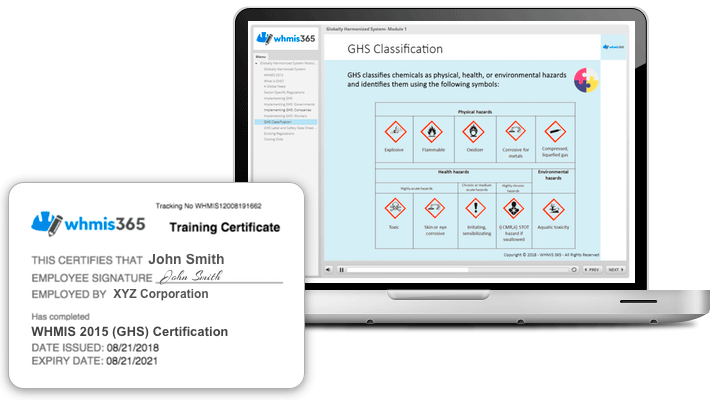What Is GHS?
GHS is an acronym for the Globally Harmonized System of Classification and Labeling of Chemicals. It is a system developed by the UN for standardizing chemical classification and communication worldwide. Classification and communication are the two essential GHS elements. The GHS defines chemical hazards, assesses their potential for harm, and then assigns them to a hazard class. The GHS uses labels with universal warning pictograms and corresponding Safety Data Sheets (SDS) to communicate hazard and accident prevention information to everyone involved in the production and handling of hazardous substances. The GHS covers all known hazardous chemicals and can be used in all sectors that deal with hazardous materials, from agriculture and pharmaceuticals to the transport industry. The GHS system aims to fill in communication gaps between these niche sectors to prevent accidents that arise through miscommunication. Workers, transporters, suppliers, and emergency responders are the primary target audiences for GHS.
Adopting the GHS
The GHS is a voluntary international system that countries can choose to adopt or incorporate into their existing hazard labeling systems. There are no binding obligations imposed upon countries or systems, and only GHS elements that have been explicitly adopted by legislative bodies are enforceable. The GHS is structured so that countries who adopt the standard can implement it directly into their own existing regulatory systems, like WHMIS, without having to adopt the exact text of the document. Though most nations and regions in the world already have their own systems in place to regulate the handling of hazardous materials, these systems are not globally standardized. For a single reactive chemical, there can be a multitude of different protocols and regulations involved in different regions, many of which change throughout the different stages of a product’s life cycle. Even in a single country, there might be a variety of organizations and regulatory bodies that use different chemical labeling and communication systems. This regulatory inconsistency causes inconvenience and redundancy for employees and stakeholders, and is an obstruction to health and safety. Countries can use the GHS building blocks to modify their existing regulatory programs or to develop new ones. It is expected that most organizations that choose to adopt GHS will need to modify their existing hazard symbols.Benefits of GHS
The adoption of GHS will benefit governments, workers, companies, and the environment. It will better protect human health and the environment. It will facilitate the international chemical trade by promoting efficiency. It will reduce the need for redundant testing and evaluation for compliance with multiple classification systems. And finally, it will reduce the need for emergency responses by reducing deaths, injuries, and accidents. Employers are responsible for ensuring that employees are trained for the GHS system. WHMIS 2015 is the updated WHMIS program that incorporates the GHS system. Canadian suppliers, employers, and workers will adopt WHMIS 2015 in stages throughout the course of 2018. Employees will need to be trained in the new system, including what GHS is, and how to understand GHS symbols, pictograms, labels, and SDSs.
WHMIS 2015 (GHS) Certification
$19.95
Regular Price: $ 29.95We provide both Team or Individual certification training for WHIMS 2015 available online 365 days a year.
Course Credit Pricing
5 - 9 Credits: $15.9510 - 24 Credit: $12.95
25 - 49 Credits: $9.95
50 - 99 Credits: $7.95
100+ Credits: $5.95
Course Credits Do Not Expire
Call: 1-855-365-SAFE
Email: [email protected]
More from whmis365.com
Workplace Compliance Safety Training Across Canada
